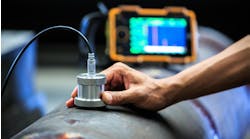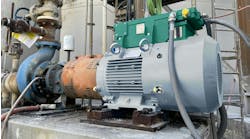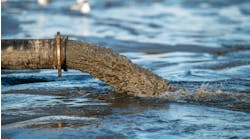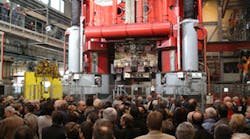For a little over a year, Aubert & Duval in Pamiers, France, has been producing titanium and nickelalloy forgings for gas turbines and landing gear parts, using an enourmous new press designed and built by Siempelkamp Press Systems — which claims the machine is one of the largest and most powerful drop-forging systems in the world.
Aubert & Duval, or A&D, supplies components to various aircraft and aerospace programs, including the Airbus A380, and it is using the new press to forge titanium and nickel-based alloys at comparatively low temperatures — 600 -1,150°C. Forging these al loys at such temperatures calls for very high forces to be applied over a relatively small area.
Siempelkamp has experience in engineering, design, and manufactur ing of forming presses for the pipe industry. The Siempelkamp Group is an international technology supplier with three business branches: machinery and equipment manufacturing; meta lcas t ing; and nuclear technology. The Group’s foundr y produces ver y large castings — up to 300 metric tons. The company employs more than 2,000 people worldwide.
A&D placed the order for the development of a design for the press with Siempelkamp Press Systems in 2001. Assembly on site star ted in June 20 04, and testing for the four main tie-rods began in October 2004. The first tests of the final machine started early in 2006, with commissioning occurring early in 2007.
Siempelkamp indicates that Aubert & Duval specified “a large and flexible space for fitting the die; high working accuracy; and low press deformation, even under extreme concentrations of pressing force and high eccentric pressing and crosswise forces. In this connection the following figures were specified: Crosswise press movement of a maximum of 3.2 mm under a horizontal force of 1,500 metric tons, and space for a die with a height of 4,500 mm.”
Cast i ron and forged pres s components were produced by Japan Steel Works Co. in Muroran, Japan. More than 1,000 metric tons of ductile cast iron parts (e.g., guide columns, moving sleeves) were produced by Siempelkamp at its own foundry in Krefeld, Germany. Siempelkamp states that the four main cylinders are designed for high durability, and are guaranteed to perform 10 million fullload strokes.
The requirements were quite exceptional: The peak pressure required under these conditions is 40,000 metric tons of pressing force. In addition, it required that three forming dies be capable of being operated simultaneously in the pres s, which means a major eccentric load on the press. Another customer requirement was that the press be capable of flexible use for dropforging, extrusion pressing, and hydroforming.
However, according to Siempelkamp officials, the high eccentric press forces were to be applied with previously unheard of working accuracy at the same time, to enable the forged parts to be produced with ext reme contour ac curacy. Thi s saves time and money by cutting out the considerable effort involved in finish working.
As a consequence, the specified requirements were for highly rigid press uprights, precise guidance of the moving crosshead, compensation for the onesided frame elongation under the eccentric pressing force, and minimal crosswise movement between the lower cross-beam and moving cross-head, with asymmetrical parts being pressed.
With a new concept for the design and construction, Siempelkamp made it possible to bring together practically incompatible customer requirements in a single solution. The design is a four-column under-floor press with external main cylinders and hydraulic parallelism control, to compensate for the diverse vertical expansions associated with the eccentric stresses. It permits the production of high-tech drop-forged parts more safely and reliably, even faster than before, and at lower cost.
The press weighs approxi - mately 5,350 metr ic tons, due to the heavy-duty design of the press frame, in order to provide the rigidity required. The moving mass of the upper moving cross-head alone weighs 2,550 metric tons, and the upper die can add up to 200 metric tons.
Thanks to the design of the cyl inder heads, the four mai n cylinders are highly durable. The design provides a guarantee for 10 million full-load strokes.
To ensure precise and safe operation, the control system logic uses data f rom approximately 280 sensors of approximately 90 cylinder axes.
Editor's note: In its original publication, this article displayed an incorrect photo. The correct image is shown on this page. We regret the confusion this may have caused for our readers.










